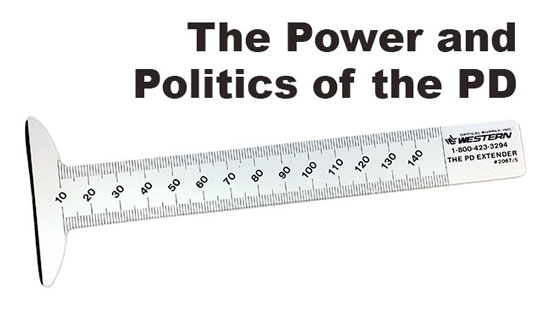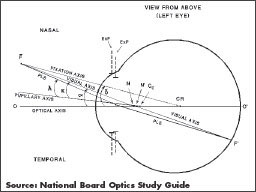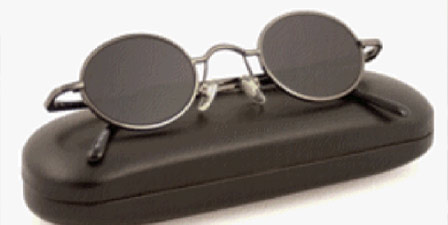
This is a reprint of a 2020 Continuing education divided into four parts.
Changing Atmosphere
If we look at the dynamics of oversight for prescription eyewear worldwide, we note how the regulatory atmosphere is changing with the arrival of online prescription eyewear. For example, in 2010, the Canadian Health Minister in British Colombia, responding to a court case involving a prominent online optical retailer, was prompted to review the current regulations concerning eyeglasses contained in the applicable Canada's Health Professionals Act. Subsequently, changes were instituted to allow BC consumers to order eyewear online without providing the seller a copy of their prescription. The new regulations stipulated that all patients must be given a copy of their Rx for free — regardless of whether requested or not. Commenting on these changes, the Health Minister noted: “With advances in technology and more consumers turning to the Internet, it makes sense to modernize a decades-old system to give British Columbians more choice...”.
The End of Primacy in PD
With the legalization of the sale of over-the-counter reading glasses in the late 1980s, the decline in the importance of accurate pupillary measurement had begun. Some states tried to limit the perceived risks of OTCs by forbidding the sale of powers over 2.75 diopters. But is this anything more than a superficial gesture, based on a "feeling" that consumers needing stronger powers should be seeing an eye doctor? As far as the potential negative effects of inaccurate PDs in OTCs is concerned, a 2009 OTC reading glass study concluded that most spectacle wearers would tolerate “up to 0.50D vertical prism [imbalance] and up to 1.0D horizontal prism (imbalance)” without marked discomfort.
Today, as OTC reading glasses approach $800 million in sales and more than 46 million units sold annually (Source: Vision Watch 2012), it is clear that consumers are willing to trade imprecise centering in return for low price.
A Primer on PD Tech
Ask any eye care professional if accurate PDs are important in satisfying an eyewear consumer, and they’ll no doubt respond with an overwhelming chorus of “Yes!” But hanging your professional hat on the hook of PD’s primacy today is a risky undertaking. To better appreciate a PD’s nuanced and multi-layered character, let's take a look at the science, anatomy and measuring techniques surrounding the pupillary distance.
PD Facts
Quite a bit of research has been done into the science of pupillary measurement. The importance of needing to define the extremes, age and gender distribution of PDs can be found within the disciplines concerned with stereoscopic displays. Here, whether considerations are binocular or bi-ocular — two eyes sharing the same entrance pupil — knowledge of the range to be accommodated is essential in designing these devices. Because of this, almost all PD research concentrates on the importance of binocular rather than monocular values. Here is a short summary of their findings:

The PD
- Changes most from birth to age 5 (up to 10 mm growth)
- Reveals second greatest change from age 5-18 (up to 7.5 mm)
- Slowing in females at age 14; males at age 18 - reflecting earlier female maturation
- Average is smaller in females than males
- Continues to change between the ages of 18-50 with most of the delta occurring in ages 18-30, and the average change is 3%
- Changes more slowly in the age group over 60 (up to 1.2 mm)
The Metrics of Pupillary Distance
By definition, the taking of a PD suggests that we are determining the distance between eye’s pupils. But within the last 20 years, as the optics and sophistication of eyeglass lenses have tremendously advanced, ECPs are having to advance their understanding of how designers use references beyond simple pupil location to help optimize a lens’s acuity, comfort and utility.
Pupillary Axis - A line drawn perpendicular to the corneal surface through the center of the eye’s (entrance) pupil.
Visual Axis - This is the actual sight-line of the eye, running from center of the fovea, through the eyes nodal points, and out to the object of regard. This is where the brain is actually looking. The point where the visual axis intersects the cornea is thought to almost coincident with the corneal apex, and therefore the corneal reflex. As the fovea is displaced temporally from the intersection of the pupillary axis with the retina, the corneal reflection/visual axis is normally found approximately 3-5 degrees nasal of the pupillary axis intersection with the cornea. The angle between these two axes is known as angle kappa, and has linear values at the respective corneal and spectacle planes (VD = 13 mm) of approximately 0.25 mm and 0.50 mm.

Corneal Reflection - also known as the corneal reflex, it is the image formed by a light source shining upon the cornea. If the examiner is co-axial with this light source, then the position of corneal reflection is where the visual axis exits the eye. This is important for determining prismatic effects and optimizing placement of a progressive lens’s intermediate corridor.
Center of Rotation - This is the virtual point around which the eye appears to rotate during its excursions. Its importance in lens design is twofold: It allows designers a proper reference for optimizing a lens’s off axis performance, and it is essential for maximizing binocular performance within a pair of lenses. A line drawn from the object/fixation point through the Cr (center of rotation) is called the fixation axis. The Cr provides a stable framework for the comparison mapping of corresponding points on each eye’s retina. Specific equipment, Rx parameters and other anatomical factors are required to assess the precise location of the center of rotation.
Please look for part four of this four part series in the Opticians Handbook next week.
 Barry Santini, ABOM, graduated from New York Technical College in 1975 with an AAS in Ophthalmic Dispensing. He is a New York State licensed optician with contact lens certification, is ABO certified and was awarded an ABO Master in 1994. As sales manager for Tele Vue Optics from 1987 to 2003, Santini developed his knowledge of precision optics and has been an owner of Long Island Opticians in Seaford NY, from 1996 to present. Recently The Society to Advance Opticianry named Barry Santini, OO, as the 2016 Ophthalmic Optician of the Year. In addition, Santini is an amatuer astronomer and lecturer and plays bass trombone in the Brooklyn Symphony.
Barry Santini, ABOM, graduated from New York Technical College in 1975 with an AAS in Ophthalmic Dispensing. He is a New York State licensed optician with contact lens certification, is ABO certified and was awarded an ABO Master in 1994. As sales manager for Tele Vue Optics from 1987 to 2003, Santini developed his knowledge of precision optics and has been an owner of Long Island Opticians in Seaford NY, from 1996 to present. Recently The Society to Advance Opticianry named Barry Santini, OO, as the 2016 Ophthalmic Optician of the Year. In addition, Santini is an amatuer astronomer and lecturer and plays bass trombone in the Brooklyn Symphony.













